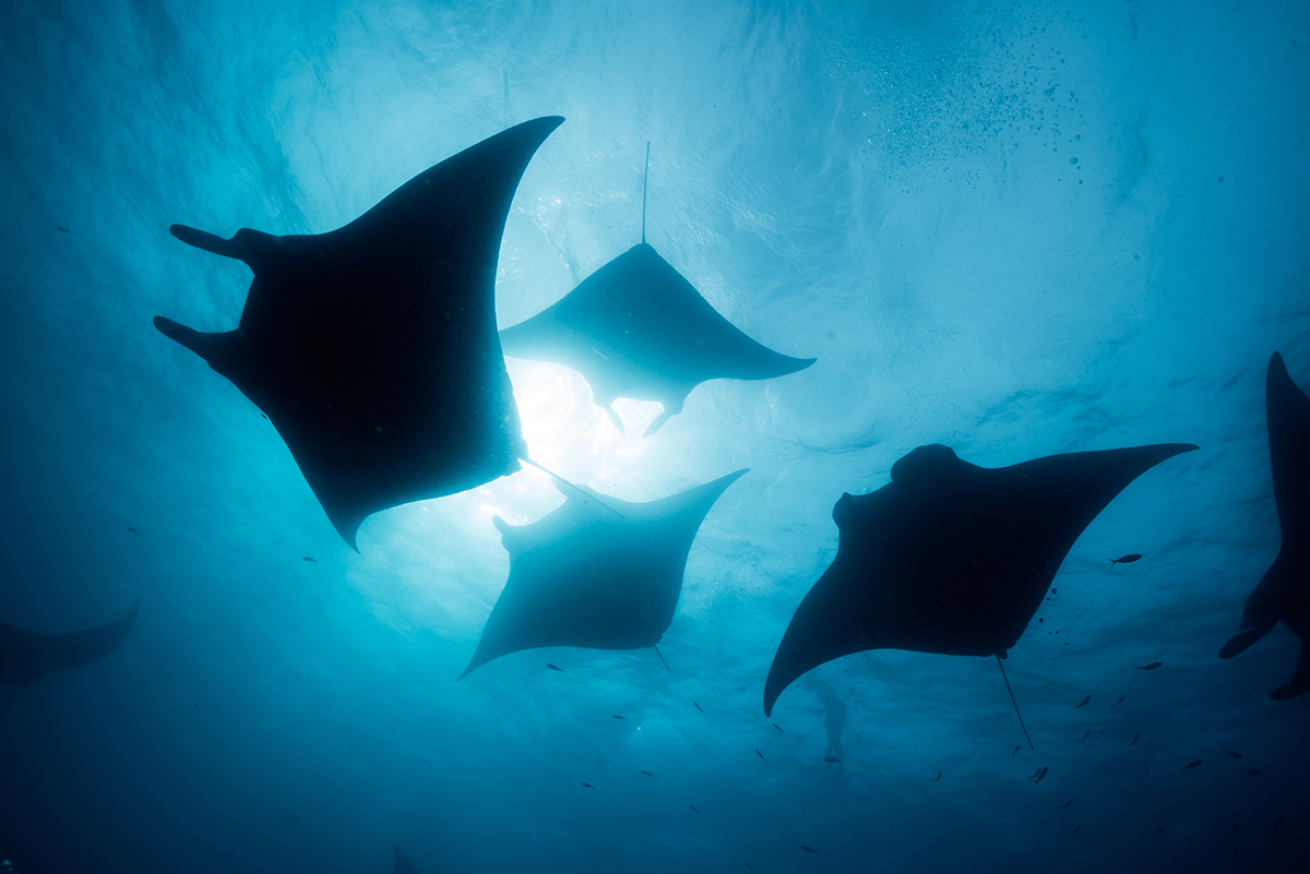World’s Largest Known Manta Ray Population Found Off Ecuador

Shutterstock.com/DivedogManta rays live in small groups, but the largest population is found off Ecuador.
Scientists found the largest known population of oceanic manta rays off the coast of Ecuador thanks to help from citizen science divers.
“In other regions, we typically have population estimates of 1,000 to 2,000 animals, which makes this species very vulnerable,” says Joshua Stewart, a co-author of the study, which was published in Marine Ecology Progress Series. “In this area, we’ve estimated that the population is more than 22,000 mantas, which is unprecedented,”
Oceanic manta rays (Mobula birostris) are the largest species of ray. With wingspans that can extend over 20 feet, these elasmobranchs glide through the oceans filter feeding on tons of krill and zooplankton.
The main threat to oceanic mantas is commercial fishing—both as a target species and as unintentional bycatch. They’re “threatened” under the U.S. Endangered Species Act and “endangered” on the International Union for the Conservation of Nature’s Red List.
“It is clear that something different is happening here,” says Stewart. “This is a rare story of ocean optimism,” he says.
Traditionally, studying mantas has been challenging because they live in small subpopulations, spend much of their time in inaccessible offshore and open ocean locations and move in unpredictable patterns. In the late 1990s, researchers from Proyecto Mantas Ecuador discovered this subpopulation of mantas aggregating around Isla de la Plata from August to September. The researchers kept tabs on the coastal group, and the latest study updates the mantas’ population size estimates and health indicators.
Manta rays have unique spot patterns on their bellies, so researchers used photos to identify individual animals by these “fingerprints” and to track their movements. Through field observations and photos donated by visiting scuba divers between 2005 and 2018, scientists identified more than 2,800 individual rays in the area and estimated a total population of over 22,000.
“Many of the photos used in our study were contributed by recreational divers who became citizen scientists when they snapped photos of manta rays,” says lead author Kanina Harty, of The Manta Trust.
“This work solidifies Isla de la Plata, and Ecuador more broadly, as a globally important hotspot for this endangered species,” says Michel Guerrero of Proyecto Mantas Ecuador. “While this population may be healthy thanks in part to its large size, it is essential that we take the necessary steps to protect and prevent the declines that many other manta ray populations have faced.”
The scientists believe upwelling of cold, nutrient rich water from the deep brings a plentiful supply of zooplankton to the surface near the island, which then attracts the record number of mantas to the region.
“While there is good news about this population, it is a cautionary tale,” Stewart adds, advocating for continued monitoring of the subpopulation. “Manta rays appear to be sensitive to environmental disruptions such as changes to ocean temperatures and food availability. They will likely be impacted by a warming climate if upwelling strength and the abundance of food changes alongside ocean temperatures.”










